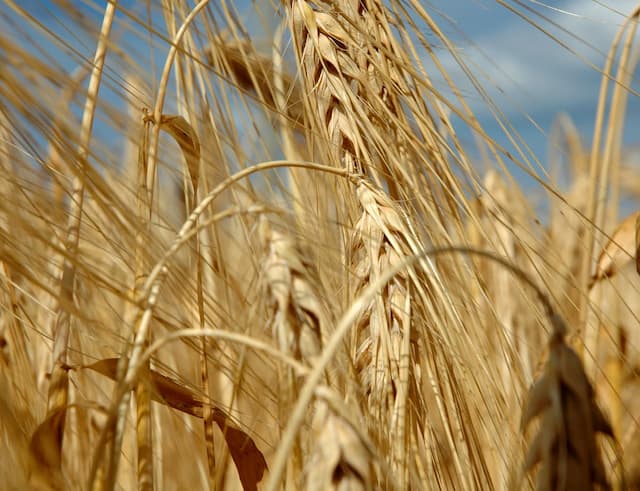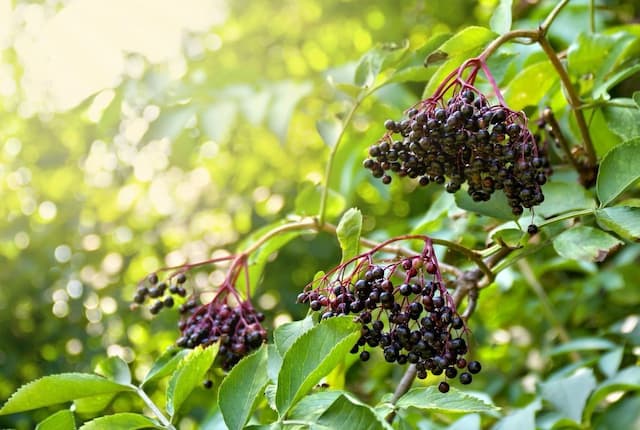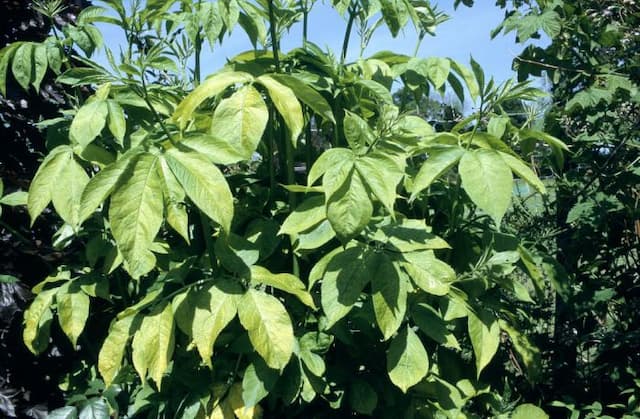Red Elderberry Sambucus racemosa Lemony Lace = 'Smnsrd4'

ABOUT
Lemony Lace is a striking ornamental plant known for its finely cut, lacy foliage. The leaves are a distinctive feature, with a bright golden-yellow color that adds a splash of sunshine to the garden almost all year round. As the seasons change, the leaves may take on hints of red, creating a beautiful contrast and adding visual interest. In the spring, you might notice clusters of small, delicate white flowers blooming, which can attract an array of pollinators like butterflies and bees. These flowers give way to red berries in late summer, which further adds to the plant’s ornamental value, contributing to the overall eye-catching appearance of Lemony Lace.
About this plant
 Names
NamesFamily
Adoxaceae.
Synonyms
Red Elderberry, Scarlet Elder, Lemony Lace Elderberry, Lemony Lace, Cutleaf Elderberry.
Common names
Sambucus pubens Michx., Sambucus racemosa var. pubens (Michx.) Koehne, Sambucus racemosa ssp. pubens (Michx.) Hultén.
 Toxicity
ToxicityTo humans
Red elderberry contains compounds that can be toxic to humans if ingested before proper processing. The plant's leaves, stems, seeds, and unripe berries contain cyanogenic glycosides which can cause cyanide poisoning. Symptoms of poisoning include nausea, vomiting, abdominal cramps, diarrhea, and weakness. Severe poisoning can lead to difficulty breathing, dizziness, headache, and even coma or death in extreme cases.
To pets
Red elderberry is also toxic to pets like cats and dogs. Ingesting parts of the plant such as leaves, stems, seeds, and unripe berries can lead to similar symptoms as in humans, due to the cyanogenic glycosides. Pets may experience vomiting, diarrhea, abdominal pain, and lethargy. Significant ingestion can result in more severe symptoms, including seizures, difficulty breathing, and potentially fatal cyanide poisoning. Prompt veterinary care is necessary if a pet has ingested this plant.
 Characteristics
CharacteristicsLife cycle
Perennials
Foliage type
Deciduous
Color of leaves
Chartreuse
Flower color
Pink
Height
3-6 feet (0.91-1.83 meters)
Spread
3-6 feet (0.91-1.83 meters)
Plant type
Shrub
Hardiness zones
3-7
Native area
North America
Benefits
 General Benefits
General Benefits- Attractive Foliage - The Sambucus racemosa Lemony Lace, commonly known as the Red Elderberry Lemony Lace, features bright yellow-green foliage which adds striking visual interest to the garden throughout the growing season.
- Seasonal Interest - It heralds the spring with its delicate lace-like leaves, and in the fall, the foliage turns an attractive red.
- Wildlife Attraction - The creamy-white flowers of the Red Elderberry Lemony Lace in spring attract butterflies and bees, while the berries provide food for birds.
- Low Maintenance - Once established, it requires minimal care, making it a convenient option for gardeners of all skill levels.
- Drought Tolerance - It is fairly tolerant of drought, making it suitable for gardens in regions with sporadic rainfall.
- Versatility - It can be planted in mixed borders, used for mass plantings, or as a standout specimen in the landscape.
- Fast Growing - Red Elderberry Lemony Lace has a quick growth rate, allowing it to fill in areas rapidly and achieve its full ornamental impact sooner.
- Deciduous Nature - Its deciduous nature allows light in during the winter, while providing shade in the summer.
 Medical Properties
Medical PropertiesThis plant is not used for medical purposes.
 Air-purifying Qualities
Air-purifying QualitiesThis plant is not specifically known for air purifying qualities.
 Other Uses
Other Uses- Sambucus racemosa Lemony Lace, commonly known as Red Elderberry, can be used for wildlife habitat enhancement as its berries attract birds and small mammals looking for food.
- The Red Elderberry, when planted in mass, can be employed for erosion control due to its root system that stabilizes soil on slopes.
- Its striking foliage makes Red Elderberry a popular choice for ornamental hedges in residential landscaping for season-long visual interest.
- The fast-growing characteristic of Red Elderberry allows for its use as a natural privacy screen in garden designs, shielding areas from view quickly.
- The resilient nature of Sambucus racemosa Lemony Lace allows it to be used in restoration projects to re-establish native plant populations.
- Red Elderberry can act as a decoy plant in gardens, drawing pests away from more valuable crops or ornamental plants.
- The plant's dense branching habit provides excellent cover for wildlife, offering a safe shelter for nesting or protection from predators.
- Due to its vibrant yellow-green foliage, Red Elderberry can be included in drought-resistant planting schemes to add a splash of color with low water requirements.
- The cut branches and foliage of Red Elderberry can be used in floral arrangements to add structure and a unique texture.
- Gardeners may use the plant as a natural dye source, with parts of the plant creating subtle hues for fabrics and crafts.
Interesting Facts
 Feng Shui
Feng ShuiThe Red Elderberry is not used in Feng Shui practice.
 Zodiac Sign Compitability
Zodiac Sign CompitabilityThe Red Elderberry is not used in astrology practice.
 Plant Symbolism
Plant Symbolism- Transformation: The Lemony Lace Elderberry, as a variety of the elder family, is associated with transformation and change. This stems from the plant's ability to rejuvenate itself by regrowing new shoots from cut branches.
- Protection: In folklore, elderberries were thought to ward off evil spirits and provide protection, leading people to plant them near their homes.
- Health and Wellbeing: Elderberries have a long history of medicinal use, symbolizing health and wellbeing due to their antioxidant properties and benefits to the immune system.
- Rebirth and Renewal: The elder plant, which the Lemony Lace is part of, is often symbolic of rebirth and renewal as it can easily regenerate from damage.
- Celebration and Joy: With its vibrant, lacy foliage and clusters of lemon-yellow flowers, this particular elderberry cultivar can symbolize celebration and joy through its visually pleasing aesthetic.
 Water
WaterRed Elderberry 'Lemony Lace' prefers consistently moist soil, so water the plant deeply enough to soak the soil to the root level, which typically requires about 1 to 1.5 gallons of water for an established shrub. During the growing season, this may mean watering once a week, ensuring the plant receives enough moisture if rainfall is lacking. In hotter, drier climates or during particularly dry spells, you may need to increase watering frequency to twice a week. However, it's essential to avoid overwatering, as too much moisture can lead to root rot. During the winter months when the plant is dormant, you can reduce watering significantly.
 Light
LightRed Elderberry 'Lemony Lace' thrives in full sun to partial shade. The ideal location would be a spot that receives at least six hours of direct sunlight daily, although it can tolerate some shade. If you're planting in a hotter climate, providing afternoon shade will help protect the plant from intense heat.
 Temperature
TemperatureRed Elderberry 'Lemony Lace' can handle a wide range of temperatures, typically surviving winters in USDA hardiness zones 4 through 7. It can tolerate minimum temperatures down to around -30°F and is comfortable in the typical summer high temperatures of these zones. Ideally, the plant thrives in temperatures between 65°F and 70°F during its growing season.
 Pruning
PruningPrune Red Elderberry 'Lemony Lace' to maintain its shape and encourage the growth of new foliage. Pruning is best done in early spring before new growth begins but can also be performed after the plant has flowered to shape it and remove any dead or damaged branches. Typically, it's recommended to prune these shrubs every year to keep them healthy and vibrant.
 Cleaning
CleaningAs needed
 Soil
SoilLemony Lace Elderberry requires well-drained soil rich in organic matter; a mix of loam, peat, and perlite works well. It prefers a soil pH between 5.5 and 6.5.
 Repotting
RepottingLemony Lace Elderberry is typically planted outdoors and does not require repotting. In containers, young plants may be repotted annually.
 Humidity & Misting
Humidity & MistingLemony Lace Elderberry thrives in moderate humidity but is adaptable to various conditions, from moderately humid to dry.
 Suitable locations
Suitable locationsIndoor
Provide bright light, moist soil, and space for growth.
Outdoor
Plant in sun to part shade, moist, well-draining soil.
Hardiness zone
4-7 USDA.
 Life cycle
Life cycleSambucus racemosa 'Lemony Lace', commonly known as Red Elderberry or Lemony Lace Elderberry, begins its life as a dormant, bare-root or potted plant which, once planted, enters a period of vegetative growth characterised by the development of its distinctive gold and green, finely dissected foliage. During spring, it advances to the flowering stage, producing clusters of white to cream flowers which are attractive to pollinators and are followed by red berries if pollinated, offering food for wildlife. Throughout summer the plant continues to grow and mature, with the foliage providing ornamental interest. As autumn approaches, the leaves may turn to varied shades before falling off as the plant enters dormancy during winter. The perennial nature of Sambucus racemosa ‘Lemony Lace’ means that this cycle of growth, flowering, fruiting, and dormancy will repeat annually, with the shrub increasing in size and vigor each year. Pruning is recommended in late winter or early spring to maintain the desired shape and promote healthy growth.
 Propogation
PropogationPropogation time
Spring to Summer
Propogation: The Sambucus racemosa 'Lemony Lace', commonly known as Red Elderberry 'Lemony Lace', is typically propagated by softwood cuttings. This is the most popular method because it is reliable and produces clones of the parent plant, ensuring consistency in the garden. The best time to take softwood cuttings is late spring to early summer when the new growth is just beginning to mature but still pliable. Cuttings should be about 4 to 6 inches (10 to 15 centimeters) long, with several leaves left on the upper part. It's advisable to dip the cut end into a rooting hormone to encourage root development and then plant the cuttings in a well-draining soil mix. A high humidity environment is ideal for rooting, which can be achieved by covering the cuttings with a plastic dome or bag. Roots typically develop within a few weeks, after which the young plants can be gradually acclimated to less humid conditions.



![Elder [Black Tower]](/_next/image?url=https%3A%2F%2Fplants-admin.emdemapps.com%2Fimages%2Fplants%2F%2Fimages%2F604b5cad99578.png&w=640&q=75)





